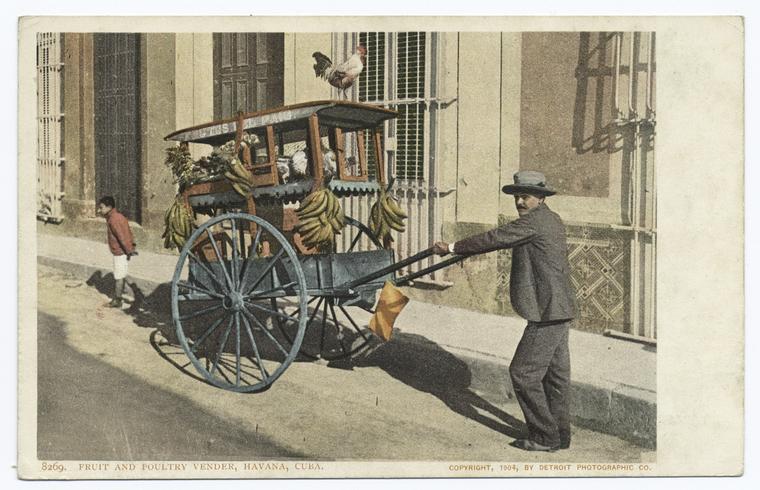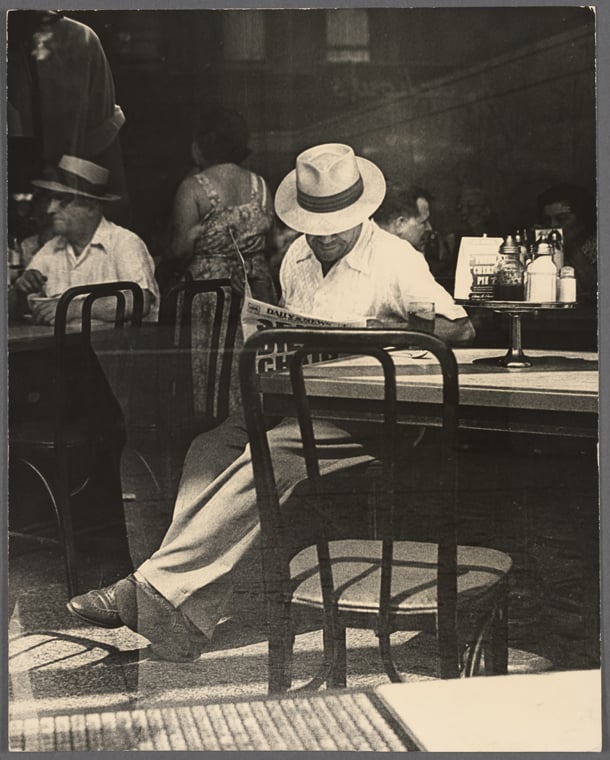Blog Archive
The History of Bustelo’s Cuban Coffee
August 11, 2015

The Cuba of the U.S. imagination as captured in 1904. Photograph courtesy of the New York Public Library.
Bustelo Coffee should be pretty self-explanatory. It is a beloved Cuban-style coffee which became a serious staple among Cuban immigrants in New York City. It then charmed its way into the homes of families from Puerto Rico and the Dominican Republic, and then everyone else. Now try walking into a bodega (corner store) in any of the 5 boroughs without passing by a brick of vacuum-sealed, brilliantly-colored Café Bustelo coffee.
Inspired by Cuban-style Coffee
Going back to the beginning of Café Bustelo history, this Cuban-style coffee was founded by Gregorio Menendez Bustelo. Born in Galicia, Spain, Bustelo moved to Cuba as a young man and fell in love with the country’s rich, dark-roasted coffee. Cuban-style coffee is usually taken with sugar and frothed with a little bit of hot espresso for lovely, creamy espumita (foam on top). Who could resist?
Café Bustelo Comes to America
Gregorio Menendez Bustelo fell in love with the people of Cuba as well, specifically a woman who loved Cuban coffee as much as he did. The couple married and moved to Puerto Rico to pursue opportunities in the coffee industry. Soon after they arrived in Puerto Rico, the Jones-Shafroth Act was signed into law. This Act made all Puerto Ricans American citizens, greatly simplifying migration to the United States. The Act also simplified Puerto Rican laws, giving the U.S. government the ability to dissolve any Puerto Rican legislation. Two months later, 20,000 Puerto Ricans were drafted into the First World War.
The Bustelos joined hundreds of newly Americanized Puerto Ricans who moved to the United States hoping for better job opportunities. The Bustelos settled in East Harlem, also called Spanish Harlem and El Barrio, because of the predominance of Spanish speaking immigrants, many of them from Puerto Rico. The Bustelos, having a hard time finding work, went all in on what they knew best: roasting coffee. Spending their savings on a coffee roaster, the Bustelos began roasting at home, which was conveniently located down the street from a movie theater. The couple thoughtfully roasted their Bustelo Coffee just as the movies were letting out, seducing patrons with that most tempting of aromas: freshly roasted coffee. By selling coffee out of their apartment at night and to area restaurants during the day, the Bustelos were able to open their own storefront in 1931 on 5th Avenue between 114th and 113th.
Café Bustelo prospered, especially as immigrants from the Caribbean streamed into New York, eager for a little taste of home and, one imagines, a little extra energy to take on the big city.
The Expansion of Bustelo Coffee
In 2000, Bustelo was finally bought by Rowland, a rival family-owned company with Cuban roots. Rowland was owned by the Soutos family, who began the company after arriving in Florida in 1960. They had already lost a successful coffee business that the family had held since 1865, so like the Bustelos, the Soutos had to build their U.S. company from scratch. Once Rowland bought Bustelo, marketing significantly expanded. J.P. Souto felt that young people were a perfect untapped market for the sweet flavor of Café Bustelo. 2009 saw Bustelo ‘host’ parties in Coachella and other popular, high-end music festivals in a bid to work their way into the energy-hungry hands of young consumers, especially those whose abuelos didn’t know of Bustelo Coffee. The brand was eager to bring in young people who were outside of the brand’s heritage demographic.
But in recent years, Bustelo has changed hands once again to J.M. Smucker, the company that often claims to have first made apple butter from apples planted by Johnny Appleseed himself. This all-American company has recently seen the advantages of pulling in a brand with a loyal Hispanic following. According to National Public Radio, the most recent census showed that the Cuban population is on the rise in every State in the union. Can Bustelo keep its special New York brand of Cuban flavor under the umbrella of an American corporate giant? There is only one way to find out. Keep tasting Café Bustelo.
Is coffee research one of the U.S. Government’s 12 good reasons to visit Cuba?
— Posted by Julia Berick, Marketing and Communications Coordinator
This post, originally published in 2015, incorrectly referred to Puerto Ricans as immigrants. This error has since been revised.

